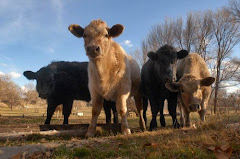www.newartcollectors.com

Having spent the first four years of her life in Aspen, Colorado, when it was just another small mountain town,
Western Colorado has continuously drawn Piera back to her roots. As a young girl she was enthralled with the adventures in beauty,
exploring the Rocky Mountains on foot and on horseback. Piera has worked with clay since childhood:
along with drawing, it is the clearest way for her to express the particular joy she finds in Southwest nature.
The line of the cave drawings and the ancient Anasazi pottery, evokes a chorus of melodic forms.
Nature's dance, captured in Anasazi line, is expressed in Piera's pottery and painting.
Piera has spent time in France, Spain, England, Scotland, and Italy, has a B.A. in Fine Arts, an A.A. in Commercial Art,
and was an Art Director in Denver. She began perfecting her pottery designs in Santa Fe, New Mexico in the 1970's.
She discovered crystalline glazing in Abiquiu, N.M. in 1991. Although the exploding atoms can be seen in the crystal glazes as modern,
Piera sees them as most truly reflecting the magic of clay and heat that has always invested Southwest pottery with its strength and mystery.
Piera's Crystal Glaze Process

Crystal glazes are unique. The crystals in the glaze are formed by exploding
atoms in the glaze, that means that during the firing process, the glaze is
in the process of becoming a glass that is covering the pot of clay.
How this occurs has a few different factors. One is the chemical
composition of the glaze ( i.e. glass). Another is the temperature that the
firing is at the various times of the process, allowing this chemical reaction to occur.
For all pottery is usually covered with a glaze then fired, so it is with crystals, but certain details are varied.
The pot has to be placed on top of a catcher basin to absorb the run-off of the glaze in firing.
These details involve the make up of the glaze (that becomes glass), what chemicals go into the glaze,
the rate the temperature rises, and finally the holding temperature (that creates the exploding atoms in the glass).
And, as important, is the cooling rate.
Crystalline Glazes are a wonderful combination of art & science, where one
never can plan or guess the actual result. This adds to the mystery of art and life!







No comments:
Post a Comment